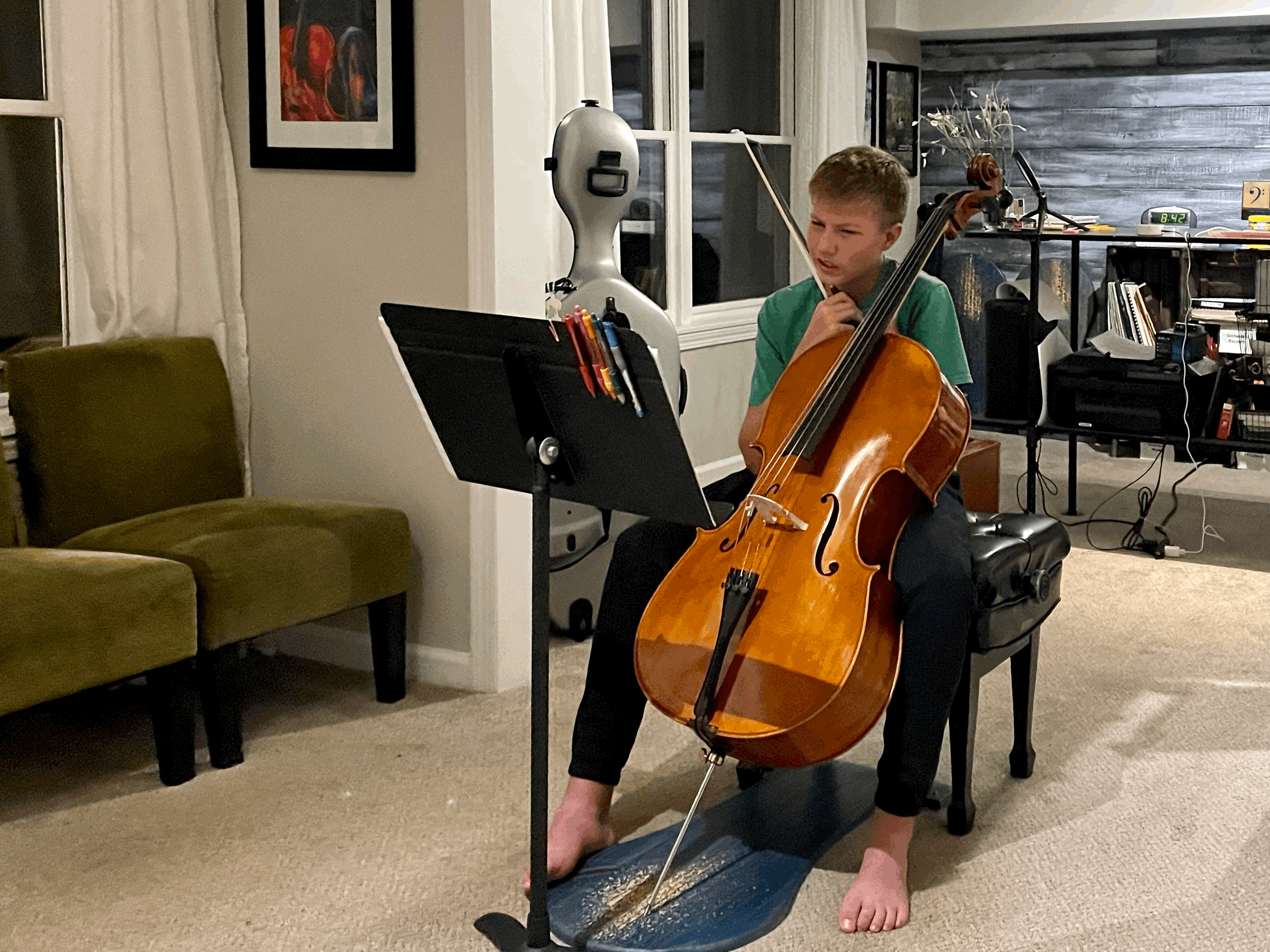
My Teaching Philosophy
My entire philosophy of teaching is built on the belief that strong technical foundations lead to confident, expressive musicians. A student who has full command of their instrument is free to focus on musicality, interpretation, and creativity. In my studio, we focus on developing secure intonation, clean shifting, flexible bowing techniques, and a disciplined practice approach—all of which allow students to play with ease and artistry.
Many young musicians are taught to prepare just for their next concert or audition, learning pieces without the broader skills needed to play fluently. My approach ensures that students are not only learning repertoire but also building the technical and musical tools to play anything. This means integrating scales, arpeggios, etudes, and bowing exercises into lessons in a way that supports their overall growth, rather than feeling like a separate chore.
That said, technical mastery is not just about discipline—it’s about making music more enjoyable. A well-trained musician doesn’t struggle with difficult passages or feel limited in their abilities; instead, they have the confidence to express themselves fully. My teaching emphasizes problem-solving, self-analysis, and thoughtful practice, so students gain both independence and confidence in their playing.
While competition and auditions can be motivating, I encourage students to measure success by their own progress, rather than by rankings or scores. Every student has different strengths and goals, and I tailor instruction to help them reach their full potential, whether they aspire to music as a career or a lifelong passion.
Beyond technical training, my students develop a deeper understanding of music—learning about historical context, phrasing, and interpretation. By blending technical excellence with artistry, I ensure that students are not only capable players but thoughtful musicians who can bring their own voice to the music.
Above all, I want students to enjoy the process of learning and playing. My goal is to create an environment where students feel challenged but supported, structured but creative—so they leave each lesson with both new skills and a renewed excitement for music.
C String Music—Dougherty Cello Studio caters to all excited cello students, from beginners all the way to advanced, from pre-K to retirement!
In all lessons, no matter the level of player, we focus on three primary areas:
Scales & Arpeggios
Etudes
Repertoire
SCALES & ARPEGGIOS are the foundation of all musical study. They are the words that make up the sentences and paragraphs of beautiful music. Within six months of the first lesson, most students will have learned scales in three octaves, and will begin to explore the fourth octave of their major and minor scales.
ETUDES give students the opportunity to develop and apply their technical knowledge to short pieces of music. Young students work through Louis’ Feuillard’s Studies for the Young Cellist. All students will learn selected exercises from Alwin Schroeder’s 170 Foundation Studies (also used for Georgia All State Orchestra auditions), before graduating to Otto Sevcik’s bowing and shifting exercises, and - eventually - David Popper’s High School of Cello Playing and Alfredo Piatti’s Caprices.
REPERTOIRE is the most important - and fun! - part of learning to play the cello. In this part of the lesson, we put it all on the table, playing beautiful and interesting music by utilizing all of the technical and musical knowledge learned in the other areas of the lesson. Students follow a progression through our repertoire list, which we’ve specifically designed to lead a cellist from the youngest ages of the beginner level through the standard repertoire of the most famous virtuosos.
Daily Practice
Learning to play the cello is like training for a marathon. It takes long-term, daily, and dedicated practice to be successful. While, at first, students should practice for as long as they’re able to concentrate - about 15 to 30 minutes per day - eventually, as they improve and advance, it is expected that students will practice upwards of 60 minutes per day, five days per week. The longer and more difficult the repertoire, the more time a student should expect to spend practicing.
Performance
The final building block in cello lessons is, of course, performance. Students are offered multiple performance opportunities each school year. In addition to scheduled recitals, semi-regular studio-group classes give students the opportunity to perform pieces they are still studying, while allowing other students to preview pieces that they will eventually learn. Playing music is a life-long and wonderful part of taking cello lessons!
Register
Contact Me

